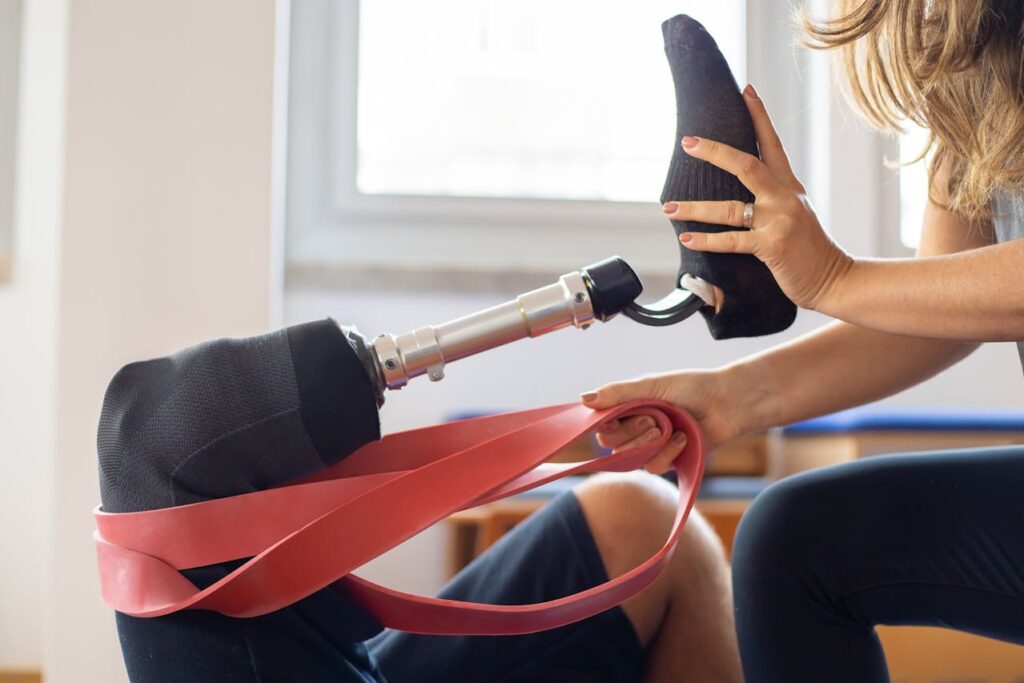Getting a trans-radial prosthetic is a major step toward regaining independence and mobility, but simply having a prosthetic is not enough. To truly benefit from it, you need to train your muscles, develop coordination, and adapt to daily life with your new limb. Whether you’re using a body-powered or myoelectric prosthetic, proper training and adaptation are key to making your prosthetic feel like a natural extension of your body.
Learning to use a prosthetic takes time, patience, and guided practice. It’s not just about wearing the prosthetic—it’s about understanding how it moves, how to control it, and how to integrate it into your routine. With the right approach, you can master grip control, fine motor skills, and movement efficiency, making everyday tasks easier and more intuitive.
In this article, we will explore how to train with your trans-radial prosthetic, build muscle coordination, improve grip strength, and adapt to daily activities.
Building Strength and Muscle Control
Before a prosthetic can be used effectively, your residual limb and surrounding muscles must be strong enough to control it properly. Training these muscles is crucial for smooth, natural movements and reducing strain on other parts of the body.
Strengthening Your Residual Limb
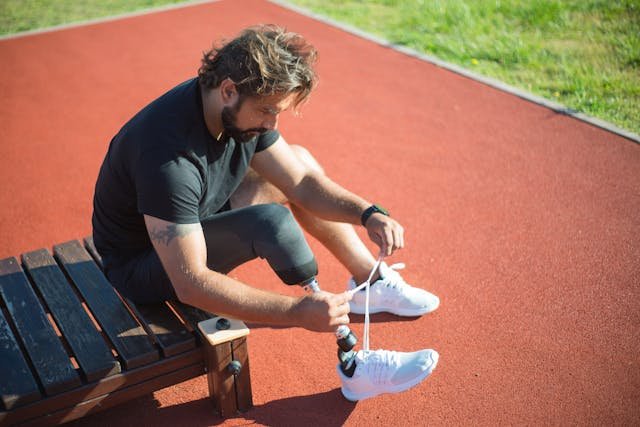
Since your trans-radial prosthetic relies on forearm muscles for movement, it is essential to strengthen the remaining muscles in your residual limb. Physical therapy exercises can help build endurance, ensuring that your arm can handle long-term prosthetic use without fatigue.
Exercises such as wrist flexion, forearm rotation, and grip training can enhance muscle strength. If you are using a myoelectric prosthetic, targeted muscle contractions will improve the electrical signals needed to control the prosthetic hand.
Over time, as your muscles adjust to controlling the prosthetic’s movements, tasks like gripping objects, rotating the wrist, and fine motor control become easier. The more you train your muscles, the more natural these actions will feel.
Improving Coordination and Response Time
Training your brain to work with your prosthetic is just as important as strengthening your muscles. When you first start using a prosthetic, movements may feel awkward or slow. With repetition, your brain will create new movement patterns, allowing for smoother and quicker responses.
Start by practicing basic movements like opening and closing your prosthetic hand, rotating the wrist, or adjusting your grip pressure. Slow, controlled practice helps your brain recognize how much force is needed for different tasks.
Myoelectric users should focus on generating strong and consistent muscle signals to avoid delayed or weak responses. Biofeedback training can help refine muscle control, ensuring that the prosthetic responds instantly and accurately.
Reducing Fatigue and Avoiding Overuse
New prosthetic users often experience muscle fatigue because their body is not yet accustomed to the additional weight and movements. It’s important to gradually increase usage time to build endurance without overexerting yourself.
Simple exercises such as flexing, extending, and stretching your residual limb throughout the day help prevent stiffness and soreness. If you feel discomfort, take short breaks and allow your muscles to recover before resuming training.
With proper conditioning and regular practice, your body will adapt to using the prosthetic efficiently, minimizing fatigue and improving overall comfort.
Mastering Grip Strength and Fine Motor Skills
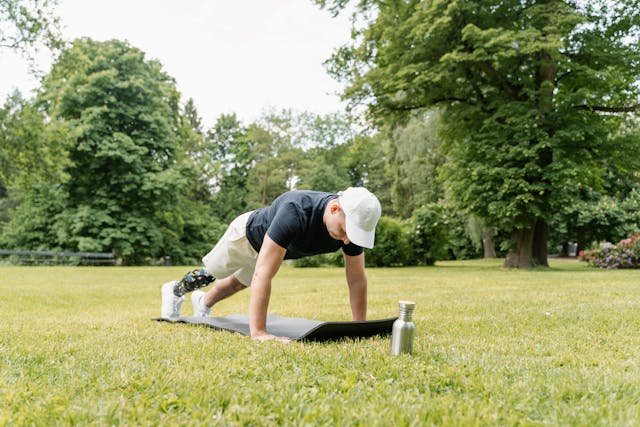
One of the most important aspects of using a trans-radial prosthetic is learning how to grip and manipulate objects. Proper grip control is essential for performing daily tasks smoothly and confidently.
Understanding Different Grip Patterns
Most modern prosthetics offer multiple grip types designed for different activities. Learning when and how to switch between grips is key to using your prosthetic effectively.
A power grip is used for holding large objects like a water bottle, while a pinch grip allows for precision tasks like picking up a pen. Some myoelectric hands offer a lateral grip, which helps in holding thin items like paper or credit cards.
Training exercises that involve lifting, holding, and releasing objects of different sizes and weights help develop control over grip strength and positioning. With practice, switching between different grips becomes natural, making daily activities more effortless.
Practicing Delicate Tasks
Fine motor skills can be difficult to master with a prosthetic, but with the right training, you can perform precise actions smoothly. Start by practicing simple tasks like buttoning a shirt, tying shoelaces, or using utensils.
For myoelectric users, practicing light muscle contractions can help with delicate movements. Gradually increasing precision with smaller objects, such as coins or beads, will build confidence and dexterity.
Training sessions with a prosthetist or occupational therapist can provide targeted exercises to improve control, grip transitions, and sensitivity adjustments. Over time, even the most detailed tasks will feel easier to accomplish.
Avoiding Over-Gripping or Dropping Objects
In the beginning, many users apply too much or too little pressure when gripping objects. This can result in crushing delicate items or dropping heavier ones. To prevent this, practice gripping objects of varying textures and fragility.
Soft foam blocks, stress balls, or lightweight household items can help you fine-tune your grip strength. Over time, you will develop a better sense of pressure control, allowing you to handle fragile objects like glassware or electronics with confidence.
Adapting to Daily Activities with a Prosthetic
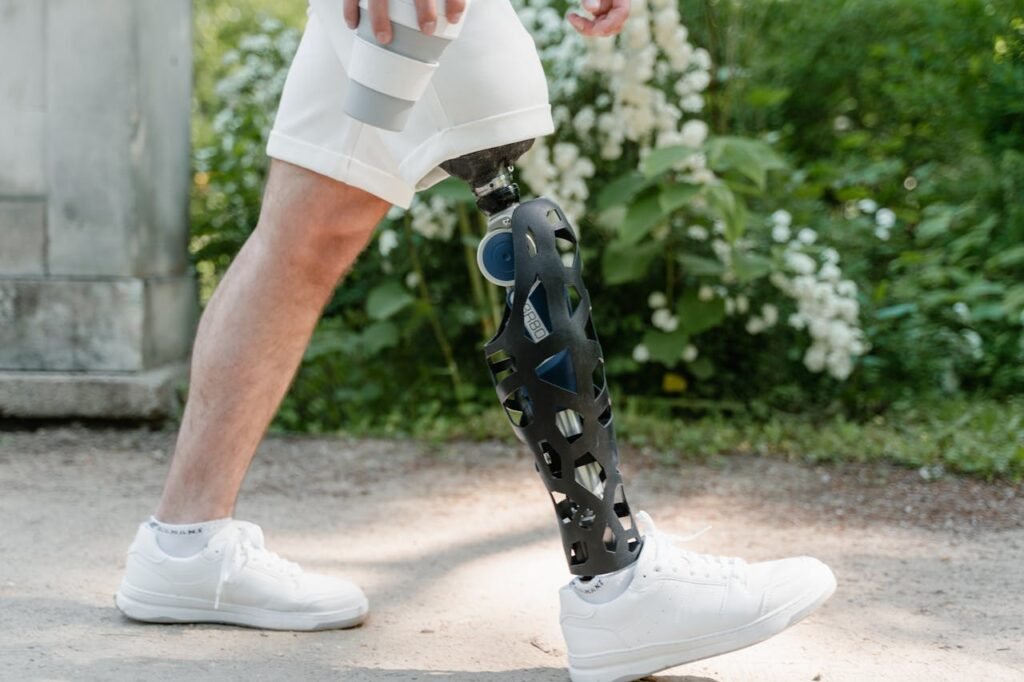
Once basic control is established, the next step is integrating your prosthetic into everyday life. The key to successful adaptation is practicing real-world activities in a controlled setting before using your prosthetic in more demanding environments.
Performing Household Tasks
Simple chores like cooking, cleaning, and opening doors may feel challenging at first, but with consistent practice, they become second nature. Start with small tasks, such as holding a spoon or pouring a drink, before moving on to more complex actions like chopping vegetables or carrying groceries.
If you experience difficulty with a particular task, consider adapting your technique or using assistive tools designed for prosthetic users. Specialized utensils, grip-enhancing gloves, and modified household tools can make daily tasks easier.
Using Technology and Tools
Many users worry about how well their prosthetic will work with technology. Typing on a keyboard, using a touchscreen, or holding a smartphone may require adjustments in grip or posture. Practicing these activities regularly will help refine speed and accuracy.
For myoelectric prosthetic users, adjusting grip settings or sensitivity controls can improve interaction with delicate touchscreens or smaller buttons. Voice commands and adaptive technology can also assist in making tech-related tasks more accessible.
Regaining Confidence in Social Settings
Adapting to a prosthetic is not just about physical training—it also involves emotional and psychological adjustment. Some users may feel self-conscious about using their prosthetic in public. Confidence-building exercises, such as practicing handshakes, gesturing, or engaging in social activities, help reduce anxiety and make interactions feel more natural.
Joining support groups or connecting with other prosthetic users can provide motivation and encouragement. Seeing others successfully navigate daily life with a prosthetic can boost confidence and offer practical tips for overcoming challenges.
Overcoming Common Challenges in Prosthetic Adaptation
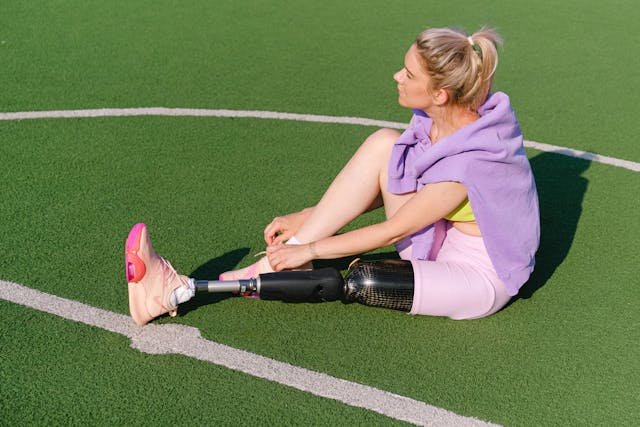
While training and adaptation are essential for mastering your trans-radial prosthetic, challenges along the way are normal. Many new users experience discomfort, control difficulties, and emotional adjustments as they get used to their prosthetic. The key to success is patience, problem-solving, and ongoing support. Understanding these challenges and how to address them can make the transition smoother and more effective.
Dealing with Discomfort and Fit Issues
One of the most common issues new prosthetic users face is socket discomfort. Since the socket serves as the connection between the residual limb and the prosthetic, any poor fit, excessive pressure, or friction can cause irritation.
If you experience discomfort, it’s important to consult with your prosthetist as soon as possible. Small adjustments to the socket’s shape, padding, or liner material can greatly improve comfort. Many users find that custom silicone liners help reduce friction and provide a more cushioned fit.
Another issue that can cause discomfort is skin irritation and sweating. Since prosthetic sockets trap heat, excessive moisture can lead to skin breakdown or rashes. To manage this, it helps to wear breathable liners, use prosthetic-friendly antiperspirants, and clean the socket regularly. If irritation persists, a prosthetist can suggest ventilated socket designs that improve airflow.
Gaining Better Control Over Movements
At first, controlling a prosthetic hand may feel unnatural or awkward. Whether using a body-powered or myoelectric prosthetic, movements may be slow, inconsistent, or require extra effort. This is completely normal in the early stages of adaptation.
For body-powered prosthetic users, the biggest challenge is learning how to activate the cable system with precise shoulder or upper-arm movements. Practicing small, controlled actions—like picking up light objects—can help improve coordination. Over time, movements will become more fluid and automatic.
For myoelectric users, learning how to generate strong and consistent muscle signals is crucial. If the prosthetic hand is not responding as expected, it may be due to weak muscle contractions or electrode placement issues. Training with a biofeedback system can help users learn which muscles to contract and how much force to apply for smooth control.
The best way to improve control is daily repetition and gradual skill-building. Focusing on one movement at a time—such as opening and closing the hand, rotating the wrist, or adjusting grip strength—helps develop muscle memory and reaction speed.
Managing Psychological and Emotional Adjustments
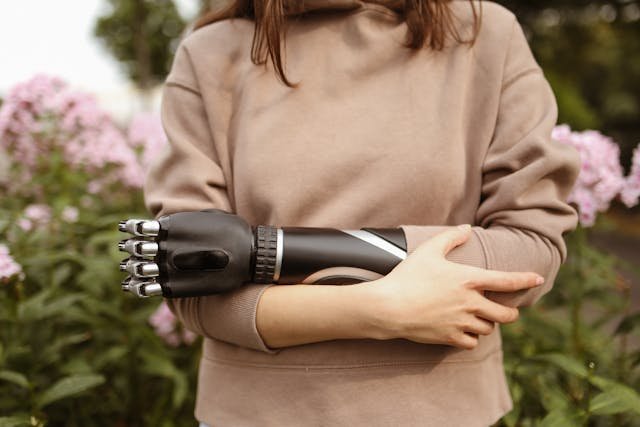
Adjusting to a prosthetic is not just a physical journey, but also an emotional one. Many new users experience self-consciousness, frustration, or uncertainty as they adapt to using their prosthetic in social and professional settings.
It’s important to allow yourself time to adjust. Accept that learning a prosthetic is a process and that small progress leads to big improvements over time. Surrounding yourself with supportive friends, family, or other prosthetic users can provide encouragement and motivation.
Practicing in low-stress environments before using the prosthetic in public can boost confidence. Simple activities like holding a cup, shaking hands, or using a phone at home can help users feel more at ease in social situations.
If feelings of frustration or anxiety become overwhelming, seeking guidance from a therapist, support group, or rehabilitation counselor can provide valuable coping strategies. Over time, most users gain confidence and feel empowered by their prosthetic’s capabilities.
Long-Term Success: Maintaining Your Prosthetic for Optimal Performance
Once you have successfully adapted to your trans-radial prosthetic, ongoing care and maintenance are essential to ensure its comfort, durability, and efficiency. Regular maintenance not only extends the lifespan of your prosthetic but also helps prevent discomfort, malfunctions, or unexpected breakdowns.
Understanding how to clean, adjust, and monitor your prosthetic will help you maintain optimal function and reliability for years to come.
Daily Care and Hygiene for Your Prosthetic
Keeping your prosthetic clean and well-maintained is essential for both comfort and hygiene. Since the socket comes in direct contact with your skin, sweat and bacteria buildup can cause irritation or infections if not properly cleaned.
Wiping the inside of the socket with a damp cloth and mild soap at the end of each day helps remove dirt and sweat. If your prosthetic has a liner, washing it regularly with antibacterial soap and allowing it to dry completely before wearing it again helps prevent skin irritation and odor buildup.
For myoelectric users, special care should be taken to clean electrode areas, as sweat or debris can interfere with signal detection. Using a dry microfiber cloth to gently wipe the sensors ensures consistent performance and accurate muscle signal transmission.
Monitoring Fit and Making Adjustments
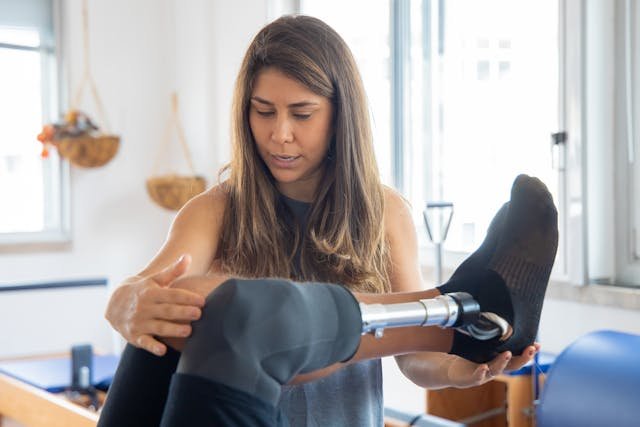
Over time, your residual limb may change in size or shape, especially if you are gaining muscle, losing weight, or experiencing swelling. Even small changes can affect comfort and control, making it important to regularly assess the fit of your socket.
If you notice increased pressure, discomfort, or excessive movement inside the socket, it may be time for an adjustment. Some modern prosthetics come with modular sockets or adjustable liners that allow minor modifications, but in some cases, a prosthetist may need to refit or resize the socket for long-term comfort.
Myoelectric users should also ensure that electrodes remain securely positioned on the skin. If signal detection becomes inconsistent, the socket fit or electrode placement may need adjustment to restore proper function.
Recognizing When Professional Servicing is Needed
While basic maintenance can be done at home, there are times when professional servicing is necessary to keep your prosthetic in top condition. Any unusual noises, stiffness, or malfunctions should be addressed promptly to prevent further damage.
For body-powered prosthetics, cable tension and harness wear should be checked regularly. If cables feel too loose or tight, or if movement becomes restricted or jerky, a prosthetist can fine-tune the settings for smoother operation.
For myoelectric prosthetic users, any delays in response time, weak grip strength, or power issues should be evaluated by a technician. Regular software updates and battery health checks can also help ensure continued efficiency and functionality.
At Robobionics, we provide comprehensive maintenance and repair services to keep your prosthetic functioning at its best. If you notice any discomfort or performance issues, contact us for a professional evaluation and servicing.
Conclusion: Mastering Your Prosthetic Through Training and Patience
Adapting to a trans-radial prosthetic is a journey that requires commitment, training, and a positive mindset. Strengthening your muscles, practicing grip control, and integrating your prosthetic into daily life will ensure that you get the most out of your device.
At Robobionics, we provide personalized training programs and expert guidance to help you transition smoothly into prosthetic use. Whether you’re learning muscle control, fine motor skills, or real-world applications, our team is here to support you every step of the way.
If you’re ready to take full control of your prosthetic and regain independence, contact us today for expert training and adaptation support. Let us help you make your prosthetic a seamless and empowering part of your life.



